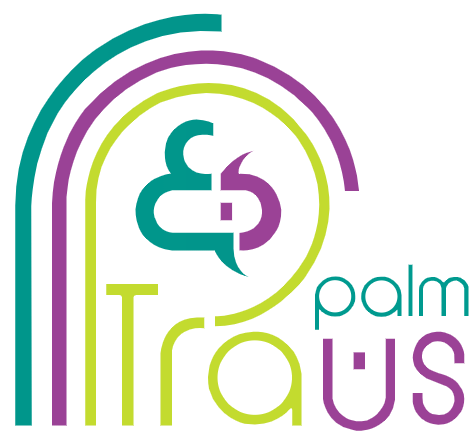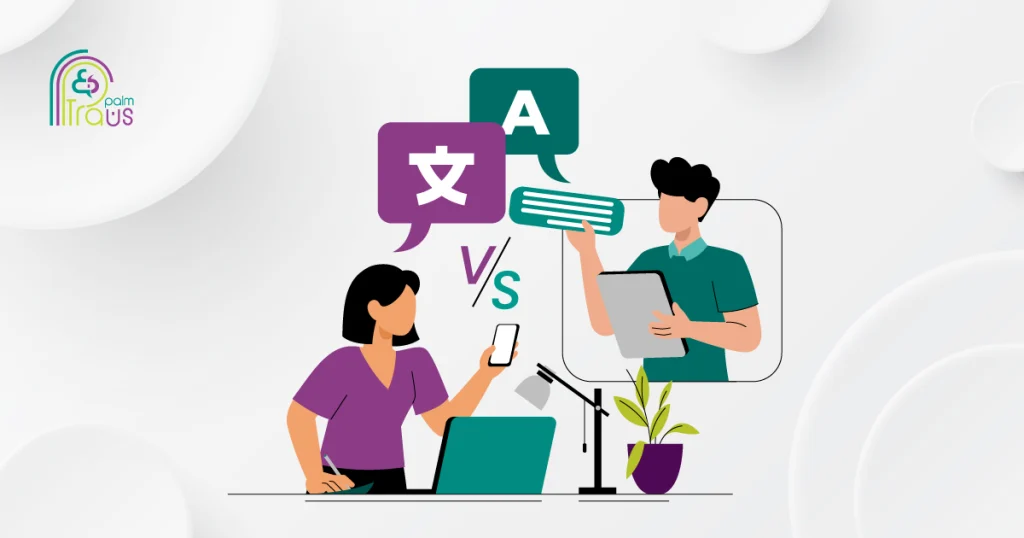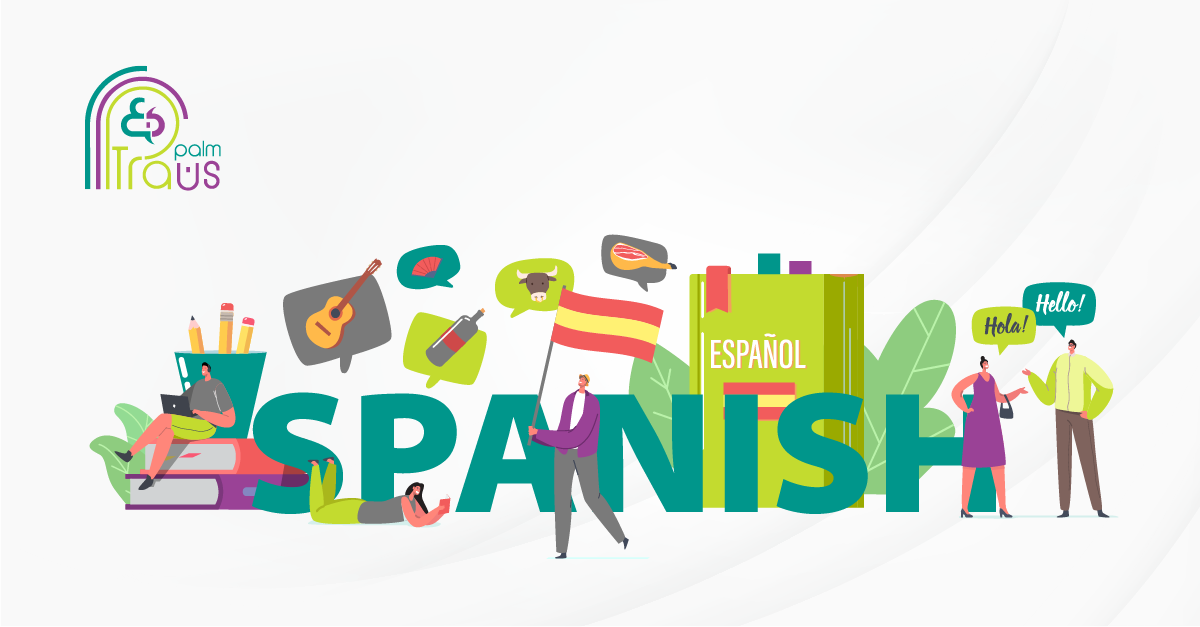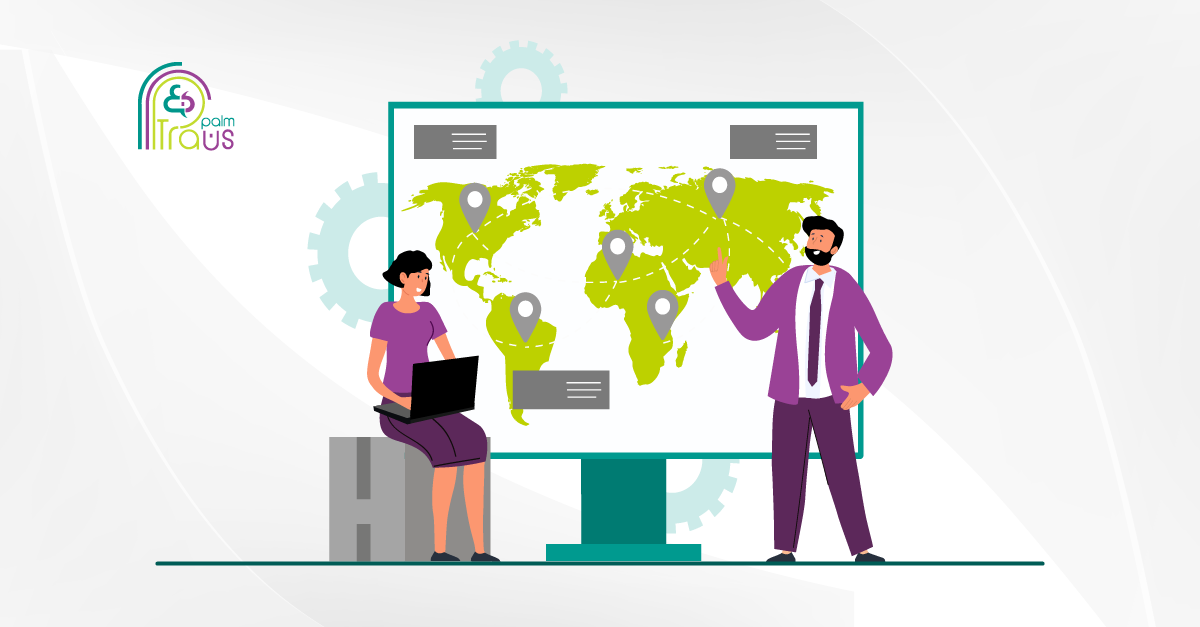Translation and transcreation may sound similar to you at first. However, they serve very different roles in the world of language service, each catering to distinct needs in terms of intercultural and interlingual communication.
In this article, we will explain translation and transcreation definitions, highlight the key differences in a comparison table, discuss when to use each service, and showcase a great transcreation example of KitKat.
What is Translation?
It is the process of transforming written text from a source language into a target language while retaining the original message in the translated text. Translation focuses more on word translation accuracy and finding corresponding expressions in the target language.
For example, the English translation of the following famous excerpt from The Alchemist by Brazilian author Paulo Coelho was originally written in Portuguese.
The English version accurately captures the meaning of the original text, preserving Coelho’s message intact. The emotions and cultural subtleties flow smoothly into the target language while preserving the poetic rhythm of the original content.
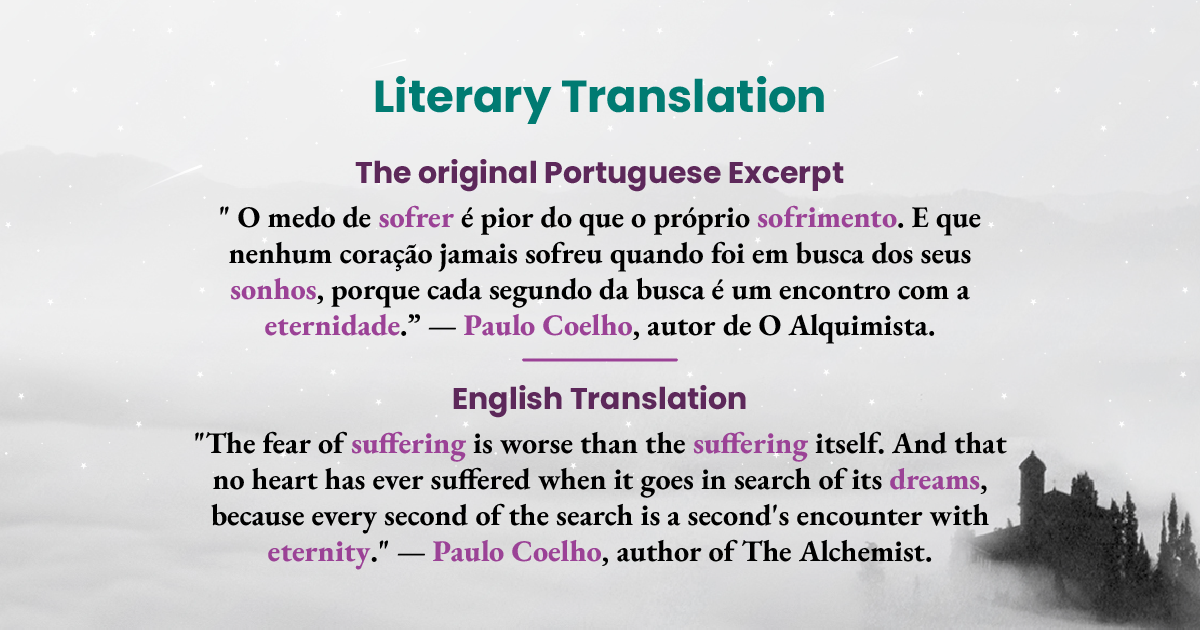
Translation is not a one-size-fits-all process, but it takes on many forms as globalization connects us more than ever. There are several types, each with particular requirements and challenges, including:
- Legal
It requires a deep understanding of legal terminology and local laws. Legal documents include patents, contracts, and court proceedings.
- Medical
Medical translation involves documents, such as clinical studies, patient records, and research papers. Like legal translation, it demands a deep consideration of specific terminologies and compliance with ethical medical practices.
- Financial
It is one of the most complex and demanding types of translation, which embraces documents such as annual reports, balance sheets, audit reports, income statements, and other financial records.
- Technical
It often requires strong knowledge and highly specialized skills, particularly in texts like scientific reports, user guides, and technology manuals, to ensure the translated text remains true to its purpose.
- Literary
Creative works, such as novels, poetry, and plays, require a nuanced command of the source text’s artistic style, tone, and structure so that the translated text maintains the same emotional impact as the original content.
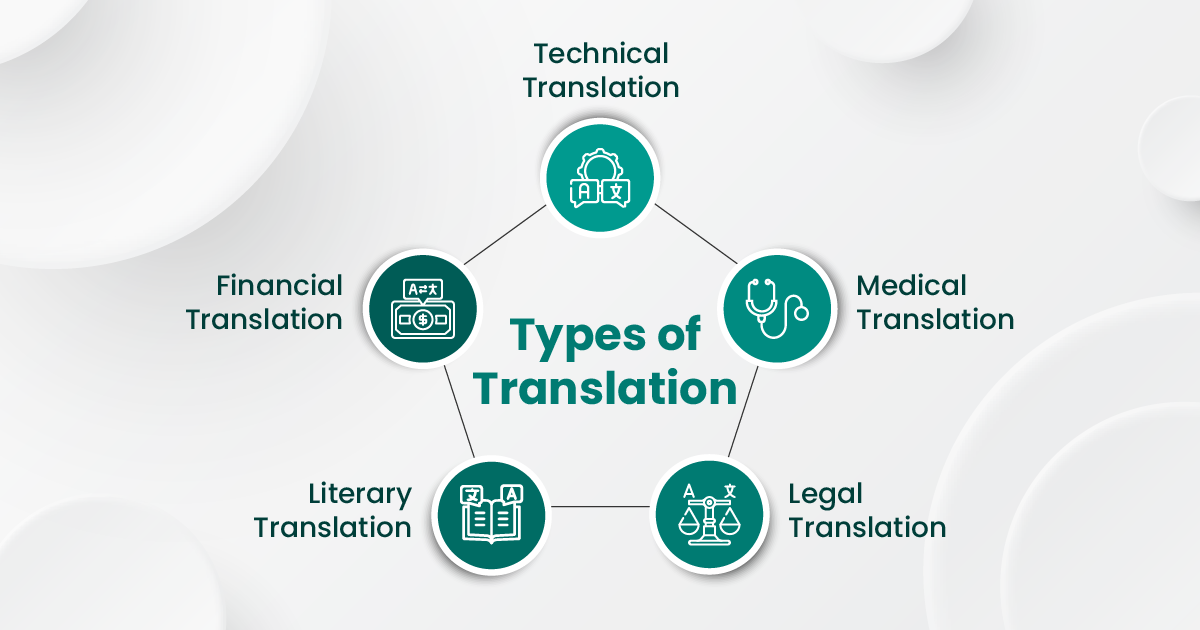
What is Transcreation?
Transcreation, on the other hand, goes a step further. It is a new term that combines the words translation and creation. In a nutshell, transcreation is the process of adapting original content from one language to another, without compromising its tone, style, intent, and emotional impact, so that it resonates with the target audience.
Transcreation involves a deep understanding of cultural references, deeply rooted in a specific culture to ensure your message fits the local market. Transcreators are not just bilingual; they are bicultural, having the expertise and capacity to adapt your message for the target market.
Unlike traditional translation, transcreation knows no limits, as it allows your imagination to run wild. The ultimate goal of transcreation services is to recreate the original content into something entirely new, tailored to evoke the same emotions and actions in the target audience as the original message.
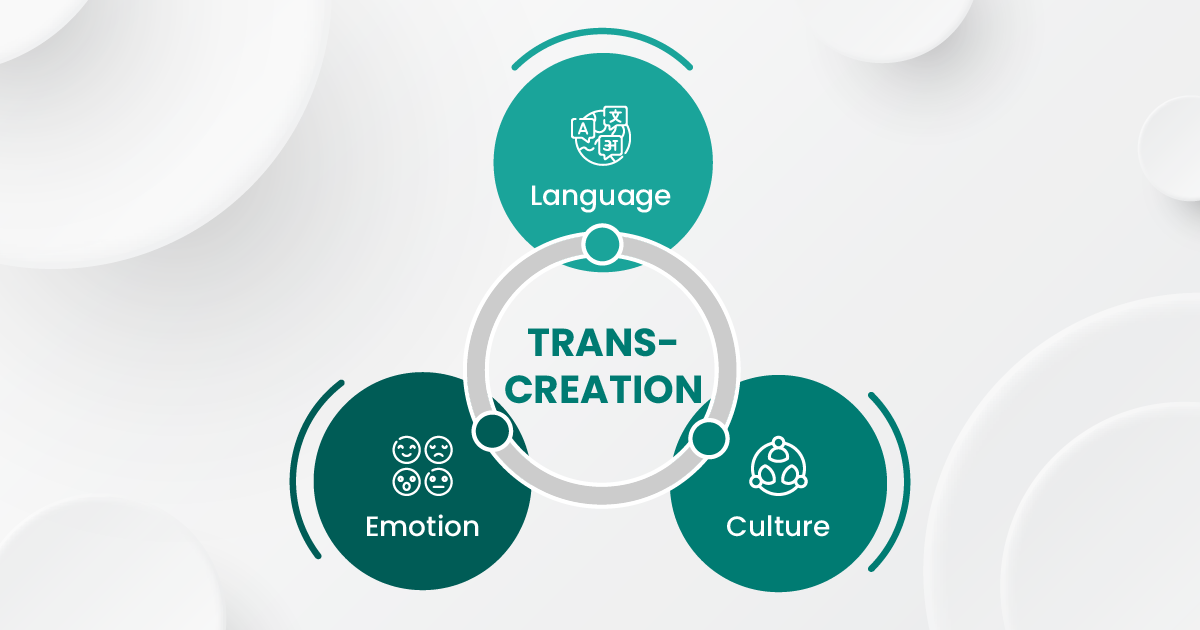
Key Differences: Transcreation vs Translation
Feature | Translation | Transcreation |
Goal | Accuracy, linguistic equivalent | Creative adaptation, emotional impact, call to action |
Process | Source text-focused | Creative brief-focused |
Creative Freedom | Limited | High |
Messaging | Preserves original content | May create new messaging |
Cultural Adaptation | Considers cultural context | Deep cultural understanding and adaptation |
Cost | Typically per word | Typically per hour or project |
When to Use Transcreation vs Translation?
Whether you choose translation or transcreation depends on the nature of your content and the goals you desire to achieve. Transcreation services are best suited for the marketing and advertising field, offering creative translation for the following:
- Marketing Content: Content transcreation is valuable for adapting humor, idioms, slogans, wordplay, taglines, creative campaigns, promotional materials, and country-specific phrases that resonate with the target audience globally.
- Brand Storytelling: It also helps to communicate core values, tone, and style in a way that aligns with each cultural context while preserving the brand’s genuine identity in the local market.
- Creative Content: Transcreation applies to content that relies on visual elements, such as colors, emojis, images, layout, typography, and formatting. It is also used in artistic expressions like poetry, literature, creative writing, and music lyrics to maintain the integrity of their creative impact.
Conversely, the translated text focuses more on staying true to the original content, particularly for technical or informational materials like user manuals, product documentation, and legal documents, where accuracy and consistency cannot be compromised.
The Sweet Success of Transcreation Strategy: A Real-Life Example of KitKat
If you’re still confused about the difference between translation and transcreation, let’s explore one of the world’s largest brands that have successfully implemented transcreation.
KitKat‘s marketing strategy goes beyond just a smart slogan. The beloved chocolate brand has mastered the art of creating buzz through transcreation to resonate with the target audience and diverse cultures around the world.
“Have a Break, Have a Kitto Katto”, that’s how Kit Kat became Japan’s Kitto Katto. So, how would they manage to connect with the Japanese audience, you ask? Simply, they rebranded themselves to fit the local market.
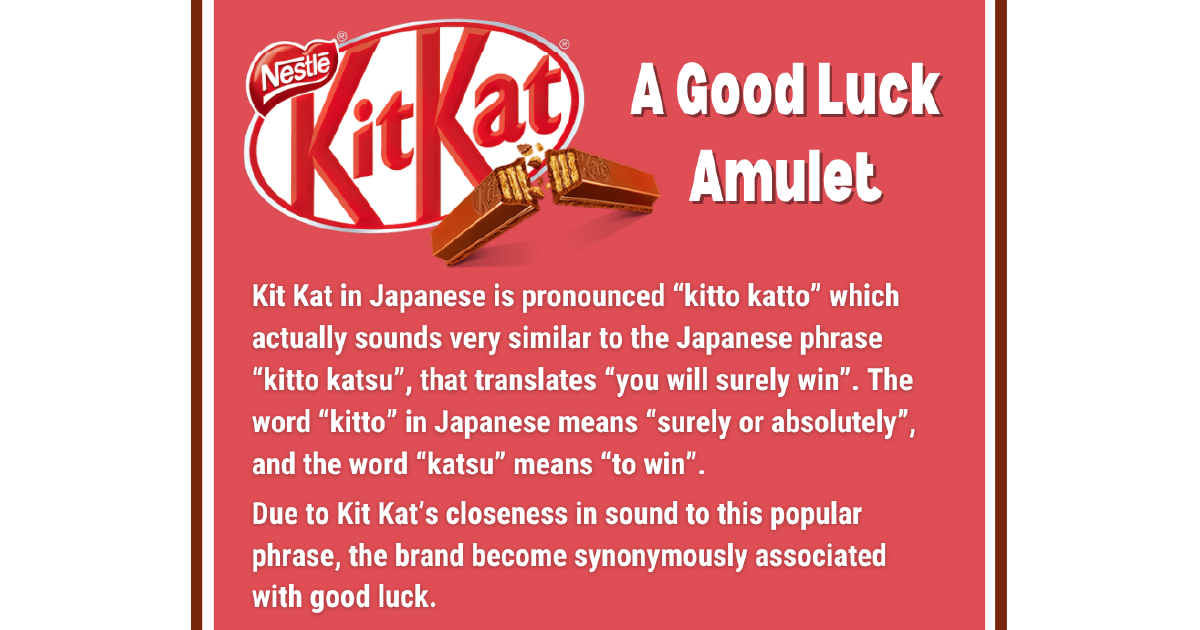
They launched a special campaign targeting students with a motivating slogan as a good luck message and a perfect gift during the exam season. This strategy leveraged Japan’s gift-giving culture and a linguistic coincidence, where “KitKat” sounds very similar to “Kitto Katsu,” meaning “you will surely win” in Japanese.
This is not just limited to the campaign idea and slogan; it also includes their exclusive 300+ flavors and a new set of products tailored for the regional audience. Despite introducing a product into a culturally different country is a challenge for a brand, KitKat by Nestlé nailed it perfectly by putting their target audiences first.
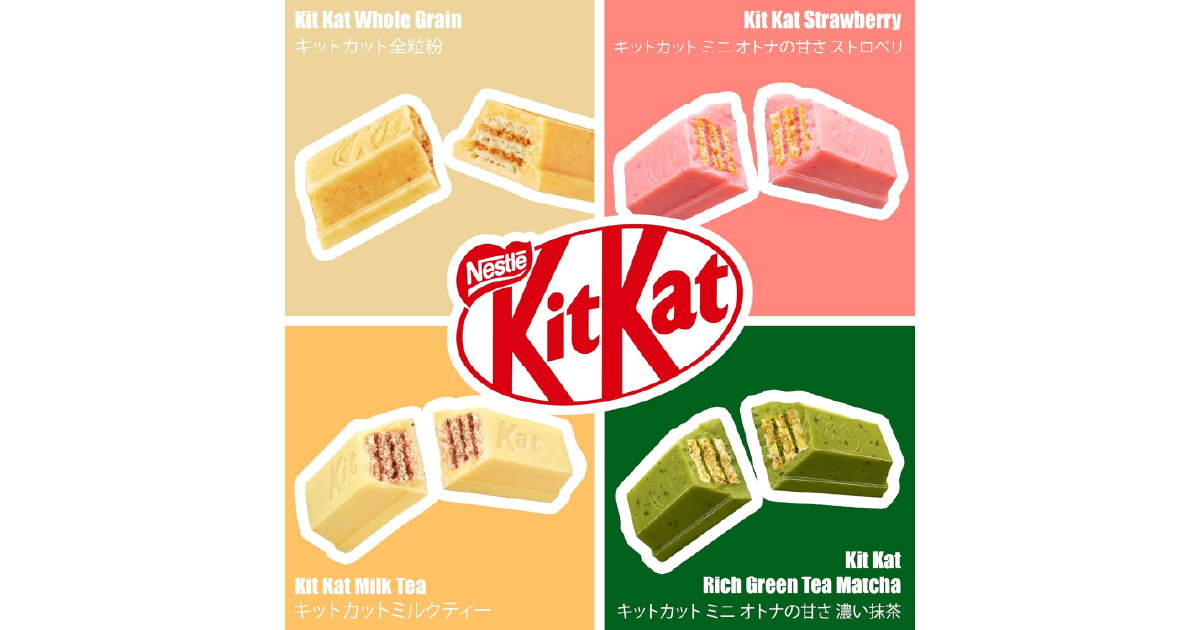
Why Partner with a Professional Translation & Transcreation Service Provider?
Working with professional language service providers gives you access to a wide network of certified translators and transcreators, each possessing a deep understanding of both the source language and target language to adapt messaging for different cultural contexts.
Most reliable translation agencies include quality assurance (QA) procedures as a part of their services. The process typically involves stages, such as initial translation, revision, proofreading, and sometimes subject-matter expert final review. They also use advanced technology to ensure that the final product meets your business needs with the highest-quality standards before delivery.
TransPalm: The Translation and Transcreation Services You Are Looking For
We don’t just translate words; we bring your message to life. TransPalm offers translation and transcreation services that connect, engage, and strike a chord with audiences across languages and cultures in over 120 languages.
Whether it’s an accurate translation or a creative transcreation, our qualified professionals are here to provide high-quality solutions tailored to your needs. Contact us today to know more about document translation services by reaching out to our expert team.
